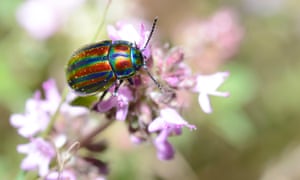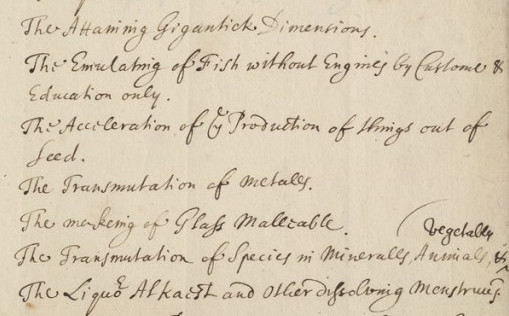via the Guardian by Emma Cook

‘I am infinitely happier than I would have expected’: Judith Kerr. Photograph: Suki Dhanda for the Observer
I don’t have any secrets to living this long. I’m just lucky. Walking has helped - it cheers me up. After my husband Tom died, I had friends who were kind, but life was very empty. You can watch rubbish on the telly if there are two of you, but it’s so difficult to watch rubbish on your own.
Continue reading
==============================
via the OUP blog

Le Penseur (The Thinker) by Auguste Rodin, taken in front of the Legion of Honor museum in San Francisco, California, 2012. Drflet, CC BY-SA-3.0 via Wikimedia Commons
The discipline of philosophy covers the study of everything; from the study of knowledge, art, language, and the very nature of existence, to moral, ethical, and political dilemmas. Stemming from the Greek word philosophia (literally translating as “love of wisdom”), there isn’t much that philosophers haven’t disputed over the years. Despite this, there are many key debates and great philosophical mysteries that remain unsolved—and quite possibly always will. From Descartes’s discussions of knowledge and personhood, to Aristotle’s analysis of the nature of life and death, we’ve listed 5 of the greatest philosophical problems still contested today. What would make your list?
Continue reading
==============================
via 3 Quarks Daily: Gavin Francis at the LRB
The first case of Spanish flu was recorded on 4 March 1918, when a military mess cook called Albert Gitchell in Camp Funston, Kansas, reported sick with a headache and fever. By the following day a hundred others had reported the same symptoms. A hangar was requisitioned to house the men, but flu has an incubation period of a couple of days, and had already moved on, aided by the war machine. By mid-April it had reached the Western Front, where three-quarters of French troops and half the British fell ill; 900,000 German soldiers were taken out of action. In April it also surfaced in South-East Asia, and in May, as the Spanish cabinet took to their beds, it was spreading through North Africa. On 1 June the New York Times reported it spreading through China (possibly for the second time), and later that summer it reached Australia. That was the first wave; through the summer of 1918 the pandemic seemed to be on the wane.
Continue reading
==============================
via the Big Think blog by Brandon A. Weber
You see a gorgeous salamander. Science sees the key to regrowing limbs, eyes, and even bones.
The concept of regrowing limbs has always puzzled, yet fascinated scientists. When the axolotl (Ambystoma mexicanum or Mexican Axolotl), an endangered salamander that was discovered in Mexico's Lake Xochimilco and Lake Chalco began to be studied, scientists were fascinated by its ability to regenerate limbs, nerves, retinal tissue, and even a broken spine.
Continue reading
==============================
via Interesting Literature
The meaning of Wordsworth’s short rainbow poem
‘My heart leaps up’, sometimes known as ‘The Rainbow’ is perhaps Wordsworth’s shortest great poem. In just nine lines, Wordsworth expresses a number of the several features of Romanticism: a love of nature, the relationship between the natural world and the individual self, and the importance of childhood in making the poet the man he becomes, memorably expressed by Wordsworth’s statement that ‘The child is father of the man’.
Continue reading
==============================
via the Guardian by Richard Jones

The rainbow leaf beetle is only found in one place in Britain. Photograph: Michel Rauch/Alamy
The phrase “they come in all shapes and sizes” could have been coined just for the Coleoptera — the beetles. At a fragile 0.325mm long, the Colombian featherwing (Scydosella musawasensis) has a good claim to being one of the smallest free-living insects in the world, and is tinier than many single-celled creatures. At the other end of the spectrum, the obviously named titan beetle, a huge Brazilian longhorn that can snap a pencil in its jaws, reaches 167mm – about 500 times the size.
Continue reading
==============================
via the New Statesman by David Dabydeen
As Kaufmann writes “it is vital to understand that the British Isles have always been peopled by immigrants”.
Scholarship on the historical black presence in Britain tends to dwell on the 18th century: the era of the slave trade, a consequence of which was the huge number of black people brought to Britain to work for aristocrats, merchants and anyone rich enough to buy such people at public auctions held in taverns and coffee houses. The documentation of their lives is plentiful, enhanced by the testimonies of former slaves such as Olaudah Equiano and Ottobah Cugoano.The rise of great cities such as Liverpool and Bristol can also be linked to the revenues from slavery. David Olusoga, Nick Draper and others have unearthed thousands of British individuals and families who benefited from investments in the African body. No account of the social and economic development of 18th-century Britain is complete without recognition of the contribution of Africans enslaved in Britain and the Caribbean.
Miranda Kaufmann’s book, however, reaches back further to tell the stories of black Tudors. It is not only groundbreaking, but also a gripping set of portraits of ten Africans, selected from the hundreds discovered through patient searching through parish registers of baptisms, marriages and burials; municipal records; tax returns; wills and inventories; household accounts and other miscellaneous, often obscure or overlooked archival materials. As Kaufmann writes, “no one has yet trawled the entire corpus of 16th- and 17th-century documents” for evidence of the black presence. There are, for example, nearly a million probate inventories that survive for the period around 1580-1720. “These lists of objects, from livestock to armour, chamber-pots to musical instruments, provide an intimate insight into the daily lives and material culture of ordinary people.”
Continue reading
==============================
via Big Think by Scotty Hendricks
One of the most influential drivers of human behavior is curiosity. That urge to discover, learn, and explore has been the driver of some of the most significant achievements in history. While the benefits of curiosity for cats remains in debate, there is no question that it is a mainstay of human progress.
But, have you ever been curious about how curiosity works?
Curiosity has been a focus for psychologists since the dawn of the science. American philosopher and psychologist William James proposed that it was a major element of human motivation more than 100 years ago. More recently, however, several models of curiosity have been introduced offering to explain not only how it motivates us, but how individuals might differ from one another in how we are curious.
Continue reading
==============================
via Boing Boing by Cory Doctorow

In 2010, The Royal Society featured the "Desiderata" (previously) of Robert "Boyle's Law" Boyle, a list of dozens of scientific discoveries and breakthroughs that Boyle hoped would be discovered by scientists.
Continue reading
==============================
via Interesting Literature
The top ten greatest sonnets by William Shakespeare
Previously, we’ve analysed a good number of Shakespeare’s sonnets here at Interesting Literature, offering a brief summary and analysis of the sonnet in question and exploring its most significant points of interest. But we gave up analysing every single sonnet by the time we got to around a third of the way in. Not every Shakespeare sonnet is a classic, simply because it was written by the Bard.
Continue reading
No comments:
Post a Comment